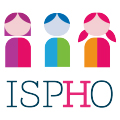תאריך: 18/02/2015
KEY POINTS
- Retinoblastoma is the most common cancer of the eye in children, accounting for 3% of all childhood malignancies. Retinoblastoma affects very young children: two-thirds of the cases are diagnosed before 2 years of age, and more than 90% before 5 years.
- Two clinical forms are identified: (1) unilateral retinoblastoma, which accounts for approximately 75% of the cases; and (2) bilateral retinoblastoma, which accounts for 25% of the cases. Patients with bilateral disease carry a germline mutation of the RB1 gene; this mutation is inherited from an affected parent in 25% of the cases, and results from a de novo mutation in utero in 75% of the cases.
- Treatment of retinoblastoma is risk adapted. Factors to be considered in the treatment decisions include intraocular and extraocular stage, laterality, and potential for vision. Ocular salvage treatments include systemic or intra-arterial chemotherapy, aggressive focal treatments (photocoagulation, thermotherapy, cryotherapy, and brachytherapy), and external beam radiation therapy.
- Children with bilateral disease are at high risk of developing second malignancies and therefore need to be followed closely. Radiation therapy is avoided whenever possible in this group of children.
Carlos Rodriguez-Galindo, MD,Darren B. Orbach, MD, PhD, Deborah VanderVeen, MD
Pediatr Clin N Am 62 (2015) 201–223
https://dx.doi.org/10.1016/j.pcl.2014.09.014

